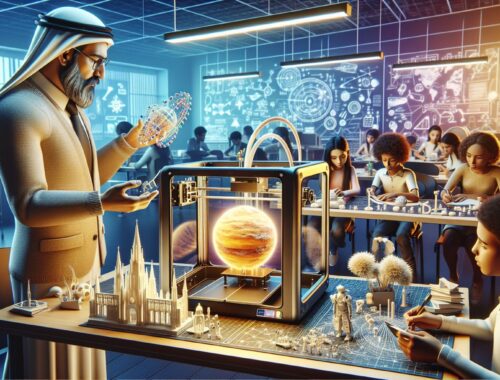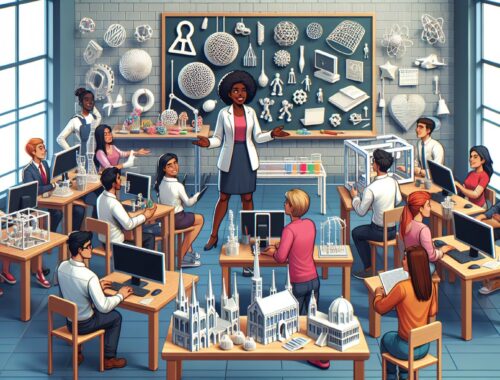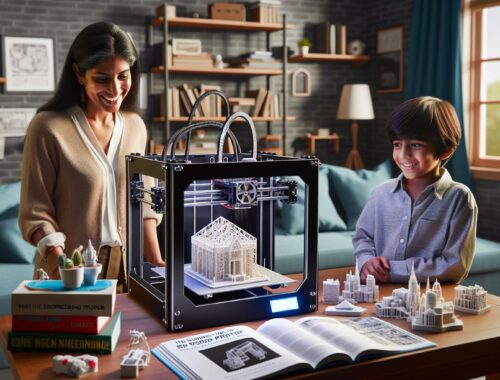Unleashing Creativity with 3D Modeling and 3D Printing
Imagine turning your wildest ideas into tangible objects that you can hold in your hands – abstract concepts transformed into reality. This power of creation is made possible through the revolutionary technologies of 3D modeling and 3D printing. For college students, the world of 3D printing opens up incredible opportunities to explore their creativity, enhance learning experiences, and even bring their entrepreneurial visions to life.
The Art of Design with 3D Modeling
Before we delve into the exciting realm of 3D printing, let’s first explore the crucial role that 3D modeling plays in the process. 3D modeling entails creating digital representations of objects that can be manipulated and transformed in three dimensions. This process offers a myriad of possibilities for college students looking to unlock their creativity and design prowess.
With 3D modeling, students can let their imaginations run wild. Whether it’s designing a toy, building models, or coming up with innovative solutions, 3D modeling empowers students to bring their ideas to fruition. Beyond traditional pen and paper sketching, 3D modeling software allows for greater precision, intricate details, and even realistic renderings.
Moreover, the accessibility of 3D modeling software has soared in recent years, making it more available to students than ever before. Many software options are free or offer student versions, making it easier for college students to develop and refine their design skills without breaking the bank.
The Revolution of 3D Printing
Once the masterpiece is crafted within the virtual realm of 3D modeling, it is time to take it even further through the process of 3D printing. Also known as additive manufacturing, 3D printing allows digital designs to manifest as tangible objects layer by layer, using various materials ranging from plastic to metal.
The practical applications of 3D printing are vast and impactful. College students can explore areas such as toy creation, rapid prototyping, manufacturing, and even creating their own business ventures. The ability to turn concepts into physical objects within hours or days revolutionizes the way we approach problem-solving and innovation.
Consider a scenario where a group of engineering students needs to test different iterations of a new product design. With a 3D printer, they can rapidly produce multiple prototypes, allowing them to evaluate and refine their ideas efficiently. This saves time, resources, and fosters a more iterative and hands-on approach to learning.
Enhancing Learning Experiences
Integrating 3D modeling and printing into college curricula enhances learning experiences across various disciplines. In fields such as architecture, engineering, and medicine, tactile models serve as invaluable tools for comprehension and practical application.
For instance, medical students can employ 3D printers to create accurate replicas of anatomical structures. By manipulating these models, students gain a deep understanding of the complex structures they will eventually work with in a clinical setting. This hands-on experience augments traditional textbook learning and allows students to develop a more tactile and comprehensive understanding.
Similarly, in mechanical engineering, 3D printing enables students to move beyond theoretical design principles. By fabricating functional prototypes or machinery parts, they can put their theories to the test and observe the real-world behavior of their creations. This experiential learning approach sharpens problem-solving skills and fosters a deeper understanding of engineering principles.
Fostering Entrepreneurship and Innovation
3D modeling and printing also inspire college students to explore their entrepreneurial spirit. Today, running a successful business often relies on unique and innovative products or services. With 3D printing, students can bring their visions to life, test their market potential, and even establish their own small businesses.
Imagine a student who has designed a revolutionary kitchen gadget that simplifies a common cooking task. With access to a 3D printer, they can manufacture prototypes and use them to showcase the concept to potential investors or customers. This not only helps secure funding or gauge consumer interest but also hones valuable skills in marketing, product development, and entrepreneurship.
Embracing a World of Possibilities
As college students embark on their educational journey, embracing the world of 3D modeling and 3D printing offers endless possibilities. From enhancing learning experiences to fostering innovation and entrepreneurship, these emerging technologies empower students to bridge the gap between the digital and physical realms.
By combining the art of design with the power of manufacturing, students can unlock their creative potential, refine their problem-solving skills, and develop a broader understanding of the practical applications of their field. As the 3D printing revolution continues to unfold, it is undoubtedly an exciting time to be a college student eager to leave a tangible mark on the world.
You May Also Like

What the Future Holds for 3D Printers for Teachers
January 24, 2024
Enhancing Learning and Creativity: Exploring the Possibilities of 3D Modeling and 3D Printing in College Education
December 17, 2023